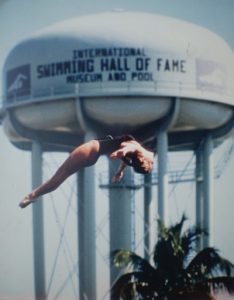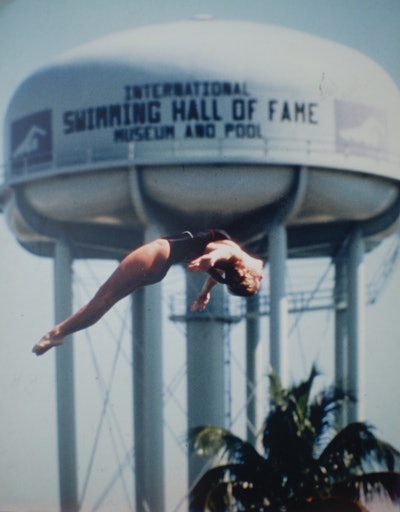Is it surprising that there are over a thousand different types of algae? Pools are continually bombarded with algae, from the air, water and land. This can make controlling algae a difficult task. We will explore how to slow or prevent an algal outbreak, and what you should do if it occurs in your pool.
There are several simple methods to prevent algae outbreaks.
Use of a USEPA-registered sanitizer is the most important way to prevent an algae outbreak. Sanitizers are designed to protect the pool from bacteria and algae. Allowing sanitizer to fall for just a few hours can allow certain algae species that grow quickly to take advantage of the pool.
Once established, many algae species will develop defensive mechanisms that can require higher levels or special products to remove. In this case, an ounce of prevention will be worth a pound in cure.
- Keep the right amount of sanitizer on hand at all times.
- Distribute the sanitizers and other chemicals evenly throughout the pool.
- Maintain a low level of minerals and nutrients in your pool.
- You should run your filter system for enough time to pass all of the water from your pool through it.
- Clean your filter system and your pool of any dirt or debris.
- To prevent algae outbreaks, use a good algicide.
Monitoring and removing, if necessary, certain nutrients that algae consume is a common practice for naturally occurring bodies of water, outside of swimming pools, to maintain water quality and prevent issues like algae. Like other living organisms Algae also needs certain food to grow. According to the USEPA, phosphorous and nitrogen are “major” limiting nutrients for algae. Most nitrogenous compounds in pools that are properly maintained eventually decompose into nitrate, which is not something you can remove from the pool. Certain phosphorous-containing compounds can be very helpful in maintaining pool water since they protect against scale formation and help remove metals that can lead to staining on pool surfaces. The final form for phosphorous-containing compounds in pool water is orthophosphate. They are different from nitrate because orthophosphate is able to be dissolved in water and removed physically. Orthophosphates can be found in many places and are constantly entering the water. It is impossible to achieve the goal of eliminating orthophosphates from pool water for a long time. You can remove orthophosphate that is causing water quality issues and maintain lower levels with a product specifically designed for this application. To manage orthophosphate, a tactical approach could be to use a product like Natural Chemistry’s PhosFree and PhosfreeMax first to reduce orthophosphate levels. Then use a multi-functional product every week to maintain the low orthophosphate level in the pool. Natural Chemistry’s Pool Perfect MAX With Phosfree is a high-performance weekly maintenance product that removes low levels of orthophosphate and adds other key components for excellent water quality during the pool season.
Don’t forget about filtering (and circulation)
The filtration and circulation system of a pool is the unsung hero when it comes to maintaining pristine water and achieving crystal-clear results. These two components, which are often overlooked, are crucial to the success of chemical treatments, the removal of unwanted contaminants, troubleshooting, and they also play a vital role in preventing algal growth. The turnover rate is a term that describes how long it takes to filter the water volume in the pool. The time required is determined by the speed of the pool pump and the runtime. We recommend that you run your pool pump for at least 10-12 hrs per day. (Run it 24/7 would be even better). The pump should be run during the daytime to ensure proper circulation and filtering when bathers and the sun are out. Due to the advent of variable-speed pumps, it is a bit more difficult to calculate the required rate as they run on different cycles. If you’re using an erosion-feeding chlorinator, pool owners should adjust the run speed to maintain the required level of sanitizer. In this case, a pro tip is to increase pump speed during the night.
The goal is to get as much water as possible through the filter while using as little energy as possible. Poor circulation may cause certain areas to become stagnant, and the chemical application in those areas will not be as efficient. It is a problem because dirt and debris can provide the perfect environment for algae to grow if the sanitizer level in these areas is not maintained. To maintain optimal performance, follow the manufacturer’s instructions for cleaning your filter and use a filter cleaner such as Natural Chemistry filter Perfect. Filters that are heavily soiled can have a dramatic impact on circulation and the flow rate.
Cleaning Pools Physically
The pool may be a place of relaxation for some but it is important to vacuum and brush the surface regularly. If you neglect this task for a long time, water quality can suffer. The first signs of algae or biofilms are often found in areas that have no circulation or poor circulation. Pool walls and dead spots are also common. Two physical pool maintenance tasks, vacuuming and brushing, can disrupt areas with poor circulation, remove accumulations and introduce treatment chemicals to the area in order to prevent an algal outbreak. Dirt and debris can accumulate over time without proper maintenance. Dirt, debris and even sand may be introduced into the pool by wind, pool users’ feet, pets who enjoy swimming, or the sand that is in a cracked or loose lateral of a sand-filter. Some algae, notably diatoms use silica from dirt and debris to build colonies. The algae can often be misdiagnosed and mistakenly diagnosed as mustard alga. Once colonies have formed, they are much more difficult to eliminate. Vacuuming regularly can help eliminate this source of nutrients.
An Ounce of Prevention
For most pools, a preventative algaecide is the best way of protecting your pool from algae. It is important to do this if your pool has a high number of bathers or if you are in an area that tends to have algae. The sanitizer may need time to build up again after being used. Choose an algaecide which works independently of the sanitizer, and doesn’t interfere with the ability for sanitizer residues to be maintained. Look for an algaecide which does not affect water quality. Some algaecides are effective, but can cause issues such as staining and water discoloration when the label instructions aren’t followed. Look for an algicide that is effective against a variety of types of algae. A combination of actives is useful against many different types of algae, since the type of algae in your pool may not be what you expect. Often, there are more than one kind of algae in an algae outbreak. Multi-active products can treat different types of algae and help to speed up the turnaround time for your pool. You should always check the label to ensure it is registered with the USEPA. It will be safe and effective to use when it is used according to the instructions. Pro Series Dual Action Algaecide, a dual-active multi-functional algaecide containing both copper-based active ingredients and polymeric algaecide to kill many types of algae. This non-staining and non-foaming algaecide can be used to prevent algae growth or to remove even the most stubborn algae. This tool should be in the arsenal of every pool professional to prevent and treat algae.
Algaecides work in different ways to control alga. Quats, Polyquats, and Copper are the most popular options. They work in different ways, disrupting cell membranes and enzymatic function of the cell. This leads to cell death or rupturing cell walls. Even within the same class of algae, some algae can be controlled in different ways with different algaecides. If one treatment does not seem to work, you should try another. It is possible that what worked once may not work again, as the type of alga (even if they look similar) or the pool conditions may have changed. Multi-active treatment may be key to a successful swimming season.
About KIK Consumer Products
Bio-Lab Inc., the Pool Division KIK Consumer Products Company based in Lawrenceville, GA. has been supplying recreational water treatment products on a worldwide basis for more than 60 years. Bio-Lab PRO includes BioGuard (r), Natural Chemistry (r), SpaGuard (r), SeaKlear, Pro Series, ProGuard and AquaPill.
The post New Approach to Algae Treatment and Prevention appeared on PoolMagazine.com, Get the Latest Pool News.







